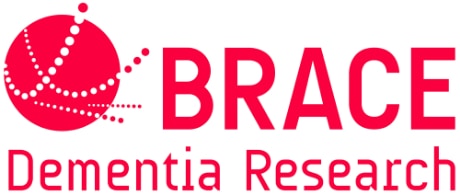Dr Oleg Anichtchik
Pilot Project: Plymouth University, 2014
Protein interactions and mitochondrial dynamics in dementia with Lewy bodies - A PhD studentship and pilot study.
See glossary at bottom of page for definition of underlined words.
Summary
Dementia with Lewy bodies (DLB) is characterised by the accumulation of a protein called α-synuclein into deposits known as Lewy bodies. This pilot study seeks to understand the role of a related protein, β-synuclein, in α-synuclein accumulation by measuring the amounts of each peptide in brain tissue of dementia sufferers. In the future, β-synuclein may be targeted which would lead to a reduction of the progression of DLB in patients. The PhD project seeks to understand the role of mitochondria in dementia. The accumulation of α-synuclein may lead to the breakdown of mitochondria leading to the neurodegenerative symptoms of the disease.
Scientific title: Examining effects of an interaction between α- and β-synucleins in dementia with Lewy bodies (Pilot study)
What do we already know?
Dementia with Lewy bodies (DLB) is characterised by the accumulation of a protein called α-synuclein into deposits known as Lewy bodies in the parts of the brain associated with memory. This may lead to neurodegeneration in these brain regions. Another member of the same protein family, β-synuclein, has been shown to have anti-aggregating effects over α-synuclein in a Petri dish.
What is this project trying to find out?
This project aims to investigate how levels of β-synuclein are associated with α-synuclein aggregation and Lewy body formation, resulting in brain cell damage in DLB patients.
How will they do this?
Human post-mortem brain tissue already obtained from a brain bank will be used in this study. Cells containing Lewy bodies will be extracted from the tissue and the levels of β-synuclein gene expression, together with other pathways thought to be involved in dementia, will be examined to see the relationship with α-synuclein aggregation.
Why is it important?
If a direct relationship is found between α- and β-synuclein, then β-synuclein could be targeted to prevent α-synuclein aggregation, which may in turn slow the progression of DLB in patients. This could potentially be extended to other pathologies involving α-synuclein aggregates such as Parkinson’s disease.
Scientific title: Mechanisms of mitochondrial dynamics dysfunction in Lewy Bodies dementia (PhD studentship)
What do we already know?
A protein known as α-synuclein is found in all neurons in the brain, and if it forms clumps (aggregates) it can damage cellular functions and result in cell death. These α-synuclein aggregates are present in the brains of patients with dementia with Lewy bodies (DLB), and are responsible for the clinical symptoms of this disease.
Synapses are the chemical junctions between neurons, and the high energy demands of this area mean that mitochondria are present in abundance. Mitochondria are the main energy factory for cells, and are highly mobile structures that can merge or split depending on the energy demands of the cell (a process known as mitochondrial dynamics). Evidence of enhanced mitochondrial breakdown has been shown in post mortem DLB brain samples, and it is thought that α-synuclein aggregation at synaptic sites leads to their mitochondrial fragmentation and thus dysfunctional dynamics, ultimately contributing to the pathology of DLB.
What is this project trying to find out?
This project aims to examine the α-synuclein-associated alterations in mitochondrial dynamics in the brains of DLB patients and, using neuronal model cell lines, the mechanisms involved in mitochondrial dynamic dysfunction in DLB. Moreover, the group will investigate whether promoting mitochondrial fusion (or blocking fission) will protect against the neurotoxic effects of α-synuclein aggregation.
How do they do this?
Healthy and DLB human post mortem tissue samples will be examined for markers of altered mitochondrial dynamics and lysosomal degradation pathways. Genotyping, mitochondrial imaging techniques and measures of mitochondrial activity in a neuronal cell line that can be induced to accumulate α-synuclein will support this work. This cell line will also be treated with blockers of mitochondrial fission to assess whether this improves neuronal survival.
Why is it important?
This research will open up the new avenue of research in DLB and will provide indications for novel therapeutic interventions to improve symptoms and to prevent the neuronal loss observed in DLB.
Glossary
α-synuclein – A peptide which accumulates in cells leading to protein aggregates associated with Parkinson’s disease and dementia with Lewy bodies.
Lewy Bodies – Toxic clumps of the peptide α-synuclein. The formation of Lewy bodies plays an important role in Parkinson’s disease, Alzheimer’s Disease and Dementia with Lewy bodies.
Petri dish – A shallow circular dish with a loose-fitting cover, used to grow bacteria or other microorganisms.
Pathology – The functional manifestations of a disease eg. Symptoms.
Mitochondria A component of a cell (organelle) responsible for energy production in the cell.
Neurotoxin – A compound which has a toxic effect on brain cells (brain cells are known as neurones).
Lysosome – A part of the cell (organelle) which contain various digestive enzymes responsible for the breaking down of most biological macromolecules. This organelle can be seen as the recycling centre of the cell.
Genotyping – A method of understanding the genetic makeup (genotype) of a sample or organism.
Further information
Please click here for more information about the work of Dr Oleg Anichtchik
Share this page
